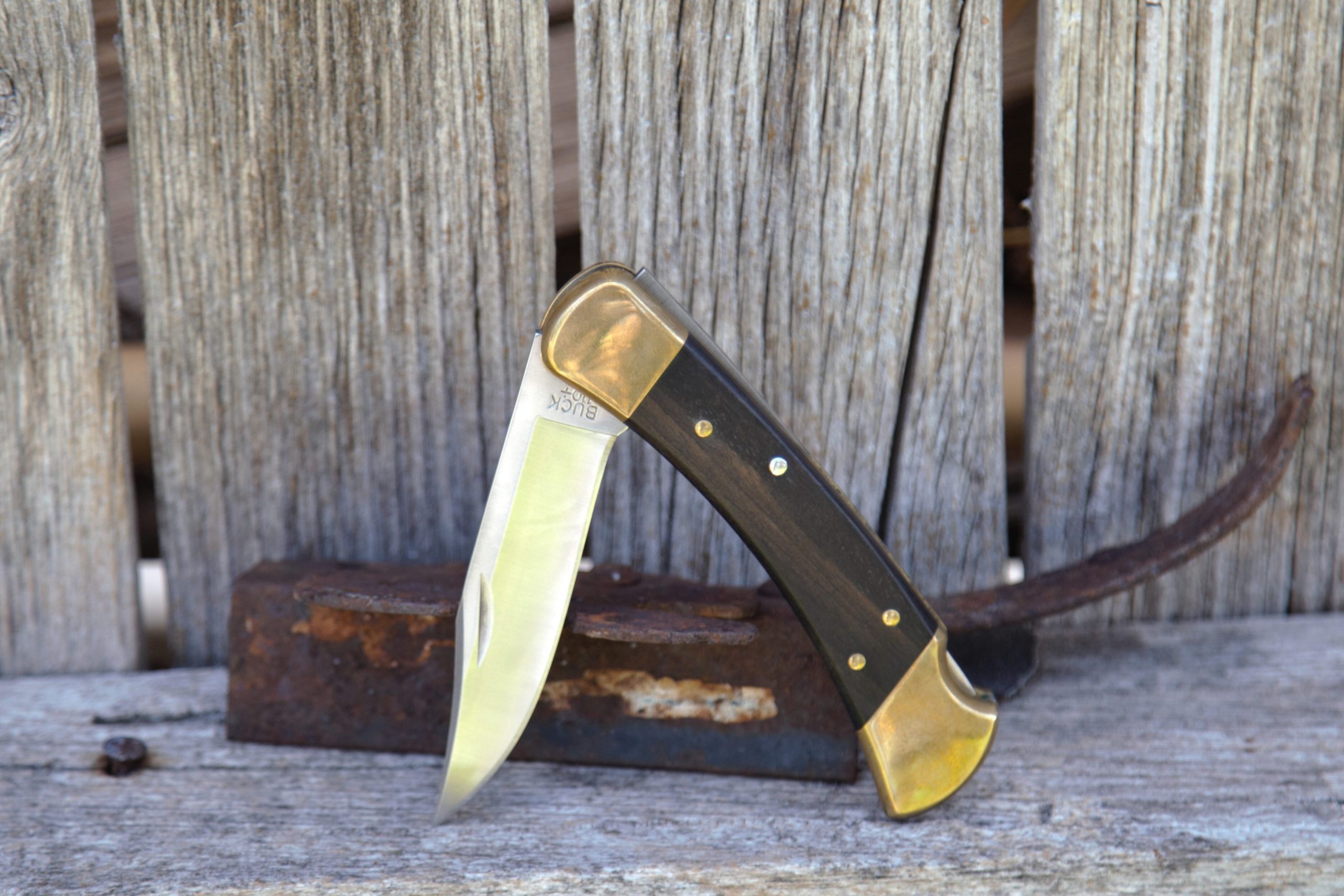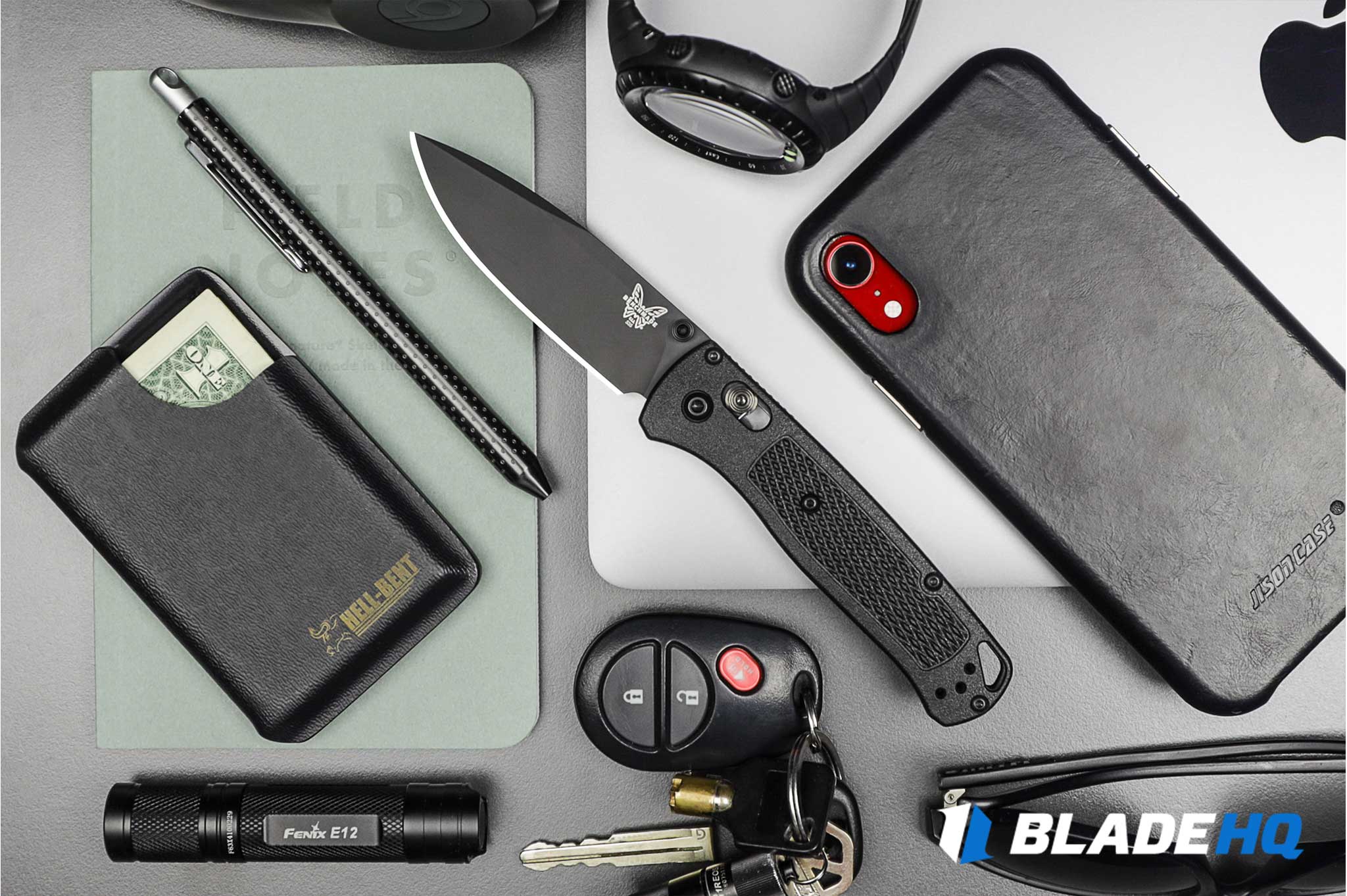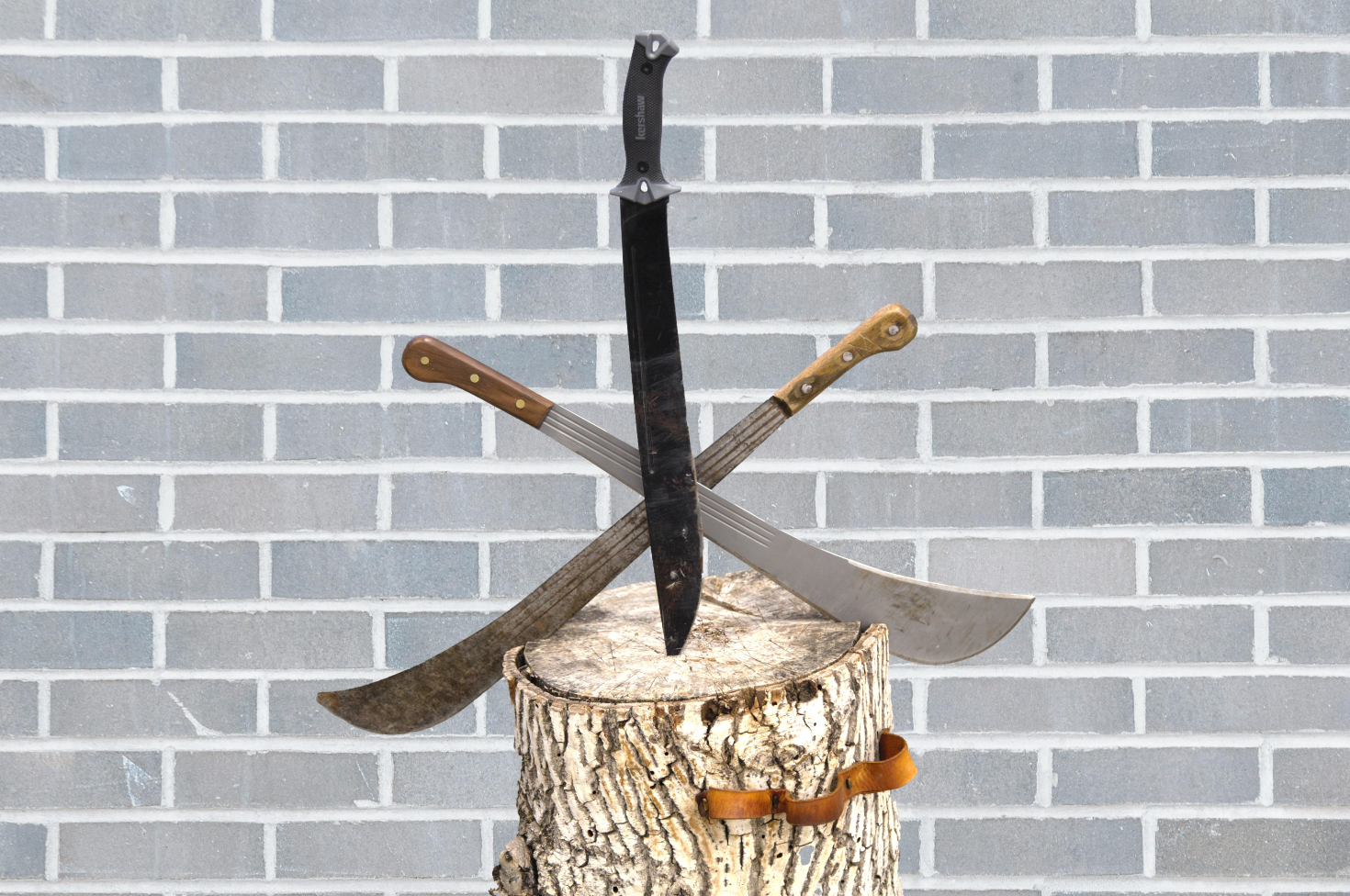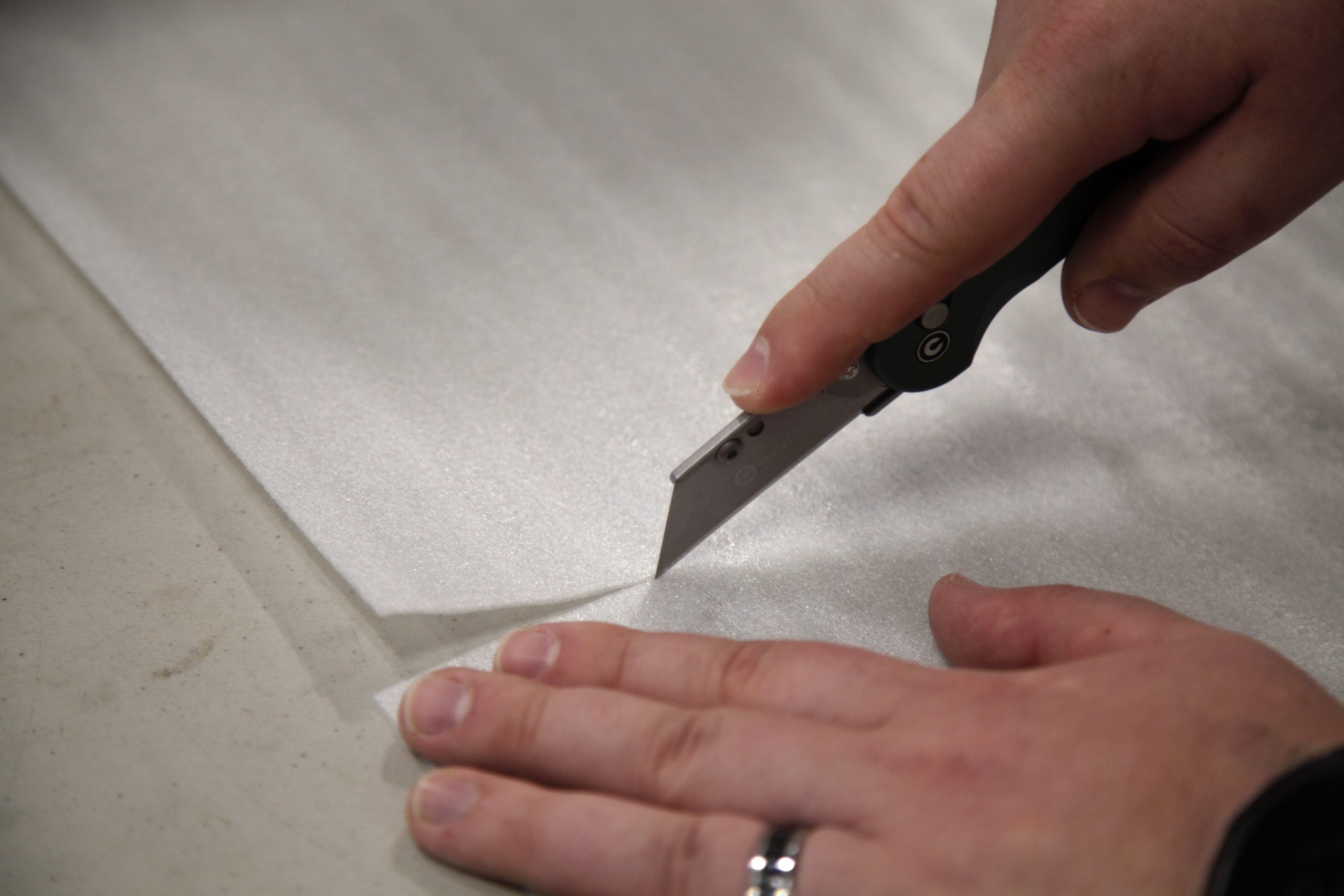
Hunting knives get a little overlooked. Most hunters are more excited to tell you about their rifles than their knives, but the right knife is one of the most important parts of any hunting kit. A good hunting knife can maximize the amount and quality of meat you get, the quality of your trophy, and the enjoyment of the hunting experience. In this article, I’ll talk about what goes into a hunting knife, what different types of hunting knives there are, and how to choose the proper knife for your next hunt.
What is a Hunting Knife?
A hunting knife is a knife with the purpose of processing game from complete animal to edible meat and a mountable trophy. A hunting knife is NOT the weapon you use to harvest said animal, at least under normal circumstances. Hunting knives tend to bridge the gap between outdoor/survival knives and kitchen knives, and they can often squeeze into either role. Hunting knives are versatile tools!
It’s worth mentioning that while hunting knives exist and make breaking down game much easier, they aren’t a true necessity. Primitive man used rocks and sticks to process meat, and that kept our budding species alive for thousands of years. Rocks and sticks can still process meat, but a knife is much easier to use. Whatever knife you use for animals, be it an EDC folder, a big survival knife, or anything in between, rock on. If it meets your needs, fills you with joy, and responsibly uses the animal, it’s the best hunting knife for you!
But if you’re after the perfect knife for your next hunt, you’ll need to know the types of hunting knives!
Types of Hunting Knives
As mentioned earlier, any knife can be a hunting knife, but these are the most common cutting tools made specifically for breaking down animals.
General Use Hunting Knife

If you can only have one hunting knife, it should be this one. This is a medium-sized knife, usually 3.5” to 5”, with a stout spine and a thin edge that does the bulk of the cutting work. They are much like butcher knives. In fact, some people just make leather sheaths for butcher knives and call it a day! Every company that makes hunting knives has a knife in this category, and many camp knives, survival knives, kitchen knives, and even folders work well in this capacity.
With some skill and patience, your general use hunting knife can process an entire animal from start to finish, but certain hunting jobs are made much easier by more specialized knives.
Skinning Knives

The job of the skinner is to remove the animal’s skin. This involves many precise cuts to separate the skin from the membrane without piercing either, so these knives have deep curves in the edge. For this reason, recurve blades are especially good at skinning. In addition to hunting, skinning knives are handy for food preparation thanks to their incredible slicing ability. Skinners are often small, usually 2” to 4” of blade length, and come as fixed blades or folders.
Boning Knives

These have thin, narrow blades for separating muscle groups and removing bones. Boning knives come in handy later in the butchery process and are essential for getting your meat into desirable cuts. That’s why most kitchen knife sets will have boning knives too!
One of my favorite things about boning knives is the fact that they have no nickname. Skinning knives are called skinners, caping knives are called capers, but boning knives are only called boning knives, unless you have an especially immature hunting party.
Caping Knives

The main job of the caper is to effectively harvest an animal’s cape. The cape is all the skin, bits, and bobs it takes to mount the animal, so it’s important that this job is done well. To that end, caping knives are small, no more than 3” of blade, and easy to control when you can’t see them. When you’re shoulder-deep in the neck of an elk trying to separate skin off the face, that small size is your best friend. If you plan to mount your trophy, it’s critical that you have a caping knife!
Bird and Trout Knives

As its name suggests, this knife is for birds, fish, and very small game like rabbits. Not only are these critters small, but they are also delicate, and big knives can disrupt the innards and contaminate what little meat the animals offer. These knives are the smallest of any hunting knives and make quick and easy work of these more delicate game species.
Replaceable Blade Knives

A lot of hunters have moved to these because they’re just so darn easy to use. Their blades are literally scalpels, as they use the same mount, same steels, same manufacturing, and same sharpening process as surgical-grade cutting instruments. They’re just bigger! These are precise and efficient, and they make sharpening irrelevant. When your blade gets dull, just snap it out, put a new one in, and get back to work.
But there’s a catch! It is critically important that you pack out your used blades. If you leave them in and around your gut pile, or even if you bury them, you are endangering the coyotes, vultures, and other scavengers that come looking for your leftovers. These animals can smell better than lab-grade equipment and many of them can dig. The last thing we want is for some poor, unsuspecting animal to chomp down on a scalpel blade and permanently injure itself. Pack your blades out!
Gut Hooks

This specialty hunting blade is designed to open the torso of the animal without piercing any of the innards. Some of these are stand-alone tools, others are on the spine of a knife. For big game, these are absolute godsends. Instead of having to carefully pierce the hide and cut it upwards a million times carefully without making a mess, you just open it like a zipper. But do be careful, if you get too excited with it, you can still pierce the digestive and excretory organs.
Bone Saws

Many butchering tasks are made easier by a saw. The most obvious situation is splitting the sternum, but it’s also great for spines, femurs, and many other cuts further down the butchering process. Go easy with it, though. The more you use the bone saw, the more bone fragments end up in your meat!
How to Choose a Hunting Knife
As with all knives, there are some things you should consider when picking from the many hunting knives available on the market today. Here are some important questions to ask yourself. The way you answer them will tell you which hunting knives to bring with you and which ones to leave at home.
What’s Your Budget?
You can find a quality hunting knife in almost every price range. The lower-priced knives will have steels with lower edge retention, so you’ll need to consider sharpening as well. But don’t let anyone tell you that you must have a $400 knife to have a good hunt! You can get the job done for much less!
What Are You Hunting?
You don’t want to bring a giant bowie knife for a pheasant hunt, or a 2” bird and trout knife for a moose. Find out what the game you’re hunting calls for and prepare accordingly.
What kind of meat do you want from your animal?
If you’re trying to fill your freezer with hamburger, you don’t have to worry too much about how you handle the meat. It’s all getting ground up anyway. But if you want steaks, roasts, tenderloins and racks of ribs, multiple knives can help you get what you need and protect those valuable cuts.
Where Are You Hunting?
If you plan on chasing a record bull forty miles into the Rockies, you’ll want as small and light a knife setup as you can muster. Every ounce of knife you can leave home is another ounce of meat you can pack out. But if you’re on a private ranch and are in a stand two hundred yards from the truck, it might be worth bringing the whole set to get the most of your meat.
Do You Plan to Mount a Trophy?
Nothing is tackier than a bad taxidermy. To give your mount its best shot at realism, your taxidermist wants a clean cape. As I mentioned ealier, if you plan to mount, it is critical that you have a caping knife, and that it is very sharp! In my opinion, this is the highest and best use of those replaceable-blade knives. When it comes time to cape, put in a brand new blade, take your time, and cape the animal. Your taxidermist will thank me later!
Do You Plan to Butcher it Yourself?
If you plan to break down your game in the field and take it to a butcher, you don’t need too much by way of cutting power. All you need to do is get it into packable sizes, get it into the truck, and take it to the butcher. If you’re ranch hunting, you can get away only gutting. Just load the gutted animal into the truck, and drop the whole thing off at the butcher. That’s a one knife job!
But if you’re butchering it alone, you’ll want a selection of knives to make the most of your kill. To me, it’s worth learning to butcher and getting the knives to do it right. Hiring a butcher every time you hunt something can add up! Your knives will pay themselves after only two or three deer, and you’ve developed a great skill for self-reliance.
Get a Hunting Knife and Learn to Use It!

I get it. Guns and bows are a lot flashier than knives, and I’m brutally reminded of this every year at SHOT Show. When you drop that trophy buck, you take a picture of you holding its antlers and your rifle resting on its side, but your knife is nowhere to be seen. But part of ethical hunting is making the most of that animal and minimizing waste, and that’s where a hunting knife saves the day. So, as you prepare for your next hunt, make sure to bring the hunting knives you need to finish the job properly!



